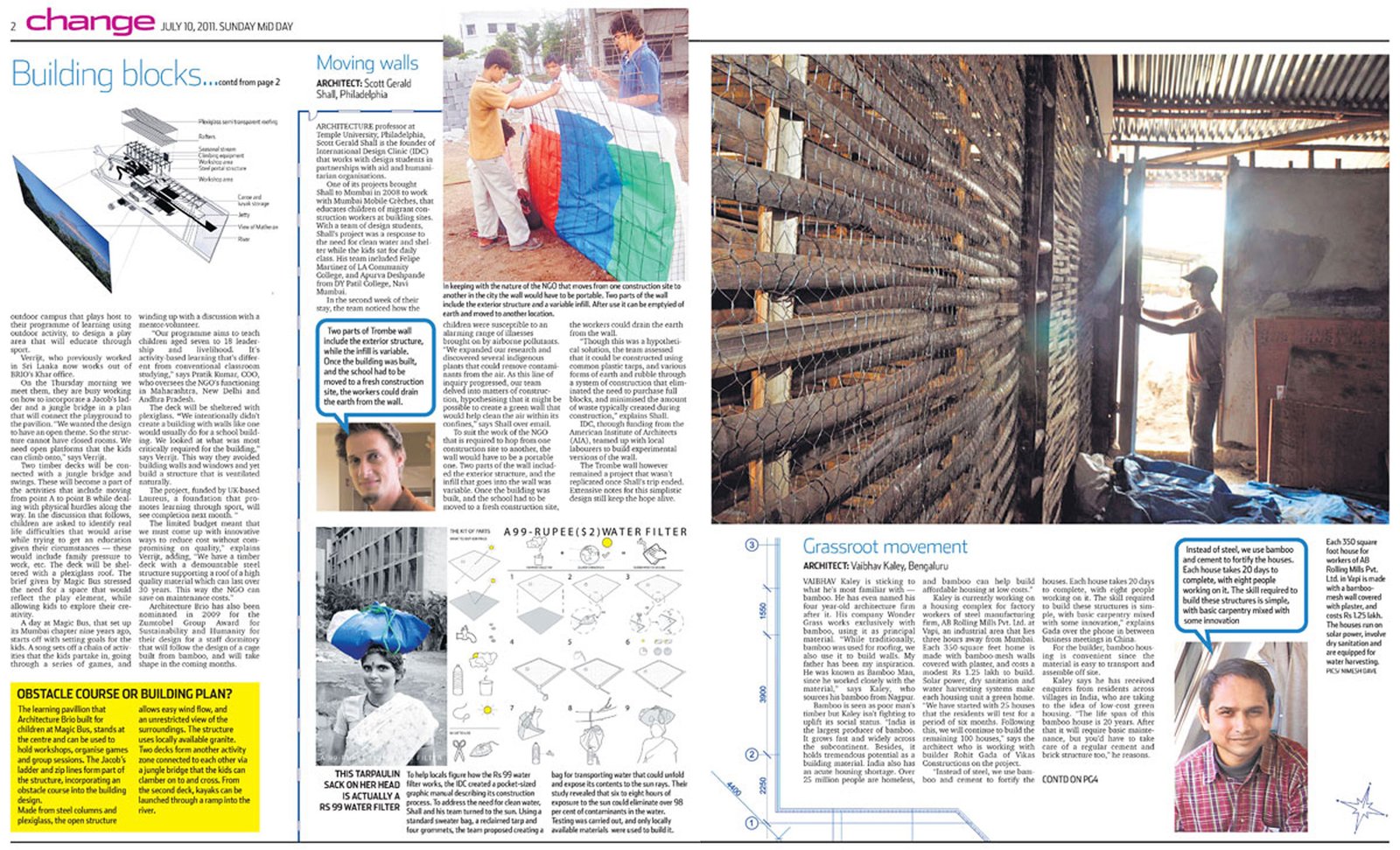- test : test
- test2 :
Sunday Mid-day published an article on architects working with communities and NGO’s in India. The article featured projects by ‘Architecture for Humanity’, ‘Scott Gerald Shall’, ‘Vaibhav Kaley’, ‘Sandeep Virmani’, ‘the Cohesion Foundation’, and ‘Architecture BRIO’
Indian architects are collaborating with their foreign counterparts to give back to the community while sticking to doing what they are good at.
Conjuring walls that move, schools set deep inside sand dunes, and bamboo homes that come up in 20 days but last 20 years are just a few of their altruistic innovations
Author: Yolande D’Mello
Learning while climbing a platform
Shefali Balwani and Robert Verrijt have been spending a large part of their day in playgrounds. But it’s not all fun and games. The Mumbai architect and her Dutch partner who started Architecture BRIO in 2006 are drawing up plans for an open-learning centre for Magic Bus. The not for profit organisation works towards empowering underprivileged children through sport. The company works with the Magic Bus Centre for Learning & Development in Karjat. This 20-acre outdoor campus plays host to their programme of learning using outdoor activity, to design a play area that will educate through sport.
Verrijt, who previously worked in Sri Lanka now works out of BRIO’s Khar office. On the Thursday morning we meet them, they are busy working on how to incorporate a Jacob’s ladder and a jungle bridge in a plan that will connect the playground to the pavilion. “We wanted the design to have an open theme. So the structure cannot have closed rooms. We need open platforms that the kids can climb onto,” says Verrijt.
Two timber decks will be connected with a jungle bridge and swings. These will become a part of the activities that include moving from point A to point B. During that journey they while need to learn to deal with physical hurdles along the way. In the discussion that follows, children are asked to identify real life difficulties that would arise while trying to get an education given their circumstances. These would include family pressure to work, etc. The deck will be sheltered with a plexiglass roof. The brief given by Magic Bus stressed the need for a space that would reflect the play element, while allowing kids to explore their creativity.
Magic Bus
A day at Magic Bus, that set up its Mumbai chapter nine years ago, starts off with setting goals for the kids. A song sets off a chain of activities that the kids partake in. Going through a series of games, they wind up with a discussion with a mentor-volunteer. “Our programme aims to teach children aged seven to 18 leadership and livelihood. It’s activity-based learning that’s different from conventional classroom studying,” says Pratik Kumar, COO, who oversees the NGO’s functioning in Maharashtra, New Delhi and Andhra Pradesh.
The deck will be sheltered with plexiglass. “We intentionally didn’t create a building with walls like one would usually do for a school building. We looked at what was most critically required for the building,” says Verrijt. This way they avoided building walls and windows and yet build a structure that is ventilated naturally.
The project, funded by UK-based Laureus, a foundation that promotes learning through sport, will see completion next month. “ The limited budget meant that we had to come up with innovative ways to reduce cost. At the same time we could not compromise on quality,” explains Verrijt, adding, “We have a timber deck with a demountable steel structure. It supports a roof of a high quality material which can last over 30 years. This way the NGO can save on maintenance costs.”
Architecture Brio has also been nominated in 2009 for the Zumtobel Group Award for Sustainability and Humanity for their design for a staff dormitory. This design of a three storey structure is to be built in a composite of bamboo, concrete and steel. They hope it may be realized in the near future.

